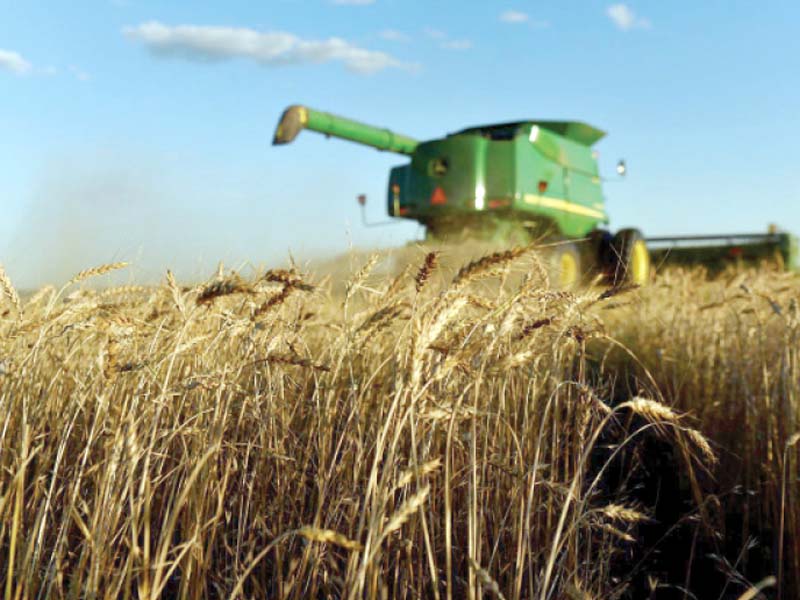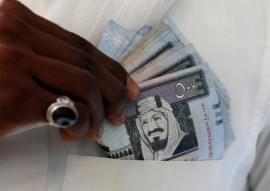
Economy revives to pre-Covid levels
SBP report says business confidence turns positive; growth is promising
Economic activities were largely restored to pre-Covid levels in the first quarter (Jul-Sept) of current fiscal year 2020-21.
The uptrend indicates a promising growth ahead in all major sectors like agriculture, industries and services, but the risk of a spike in Covid-19 cases still poses a major threat to growth trends.
Pakistan’s central bank reported on Tuesday that the Business Confidence Survey turned positive after quite a long time. The economic growth stands promising with the recent increase in wheat support (minimum) price by the government for purchases from farmers in the forthcoming harvesting season (Feb-May) and availability of subsidised fertilisers and pesticides.
Besides, the State Bank of Pakistan (SBP) projects potential growth in export of rice and textile amid the November industrial package, uptick in collection of taxes, continuous strong receipt of workers’ remittances in the months ahead and the outlook for further narrowing down of current account deficit in the full fiscal year (FY21).
“Real GDP (gross domestic product) growth is projected to be in the range of 1.5-2.5% in FY21 (compared to 0.4% contraction in FY20),” the SBP said in its first quarterly report on The State of Pakistan’s Economy for Fiscal Year 2020-21. This is based on current trends of economic activity. However, the downside risk to this projection includes the second wave of Covid, which has swept across many countries and, in Pakistan’s case, gained momentum in November 2020. Supply-side shocks from uncertain weather conditions cannot be ruled out either, the report said.
At the same time, there are also potential upsides. These include the development and distribution of an effective vaccine and its possible early availability in Pakistan.
“The announced increase in the wheat support price and subsidies on fertiliser and pesticides may contribute to a better-than-expected outturn of Rabi (winter) crops. In addition, the October 2020 wave of the SBP BCS (Business Confidence Survey) also reflects improved business sentiment, with the Purchasing Managers Index (PMI) turning positive for the first time after eight waves.”
The outlook for the external sector has improved since the previous set of projections published in the SBP’s FY20 Annual Report.
“The current account deficit is now projected to be in the range of 0.5-1.5% of GDP (earlier: 1-2% of GDP). The revision is mainly due to an upward adjustment in workers’ remittances, which are now expected to be in the range of $24-25 billion (earlier: $22-23 billion),” the central bank said.
The new projections for workers’ remittances, however, carry risks as well. Spikes in global Covid-19 infection cases may again slash crude oil prices in world markets and badly impact the oil-exporting GCC economies. “This may translate into a sizable reduction in their demand for foreign workers, leading to lower remittance inflows to Pakistan.”
The outlook for exports and imports largely remains unchanged from their earlier assessment. “The greater quantum of high value-added textile and food commodities - especially rice - is expected to generate above-target growth in exports,” the SBP said.
“The incentives given in the industrial support package since early November 2020 may help textile sector exports perform better.”
Imports are projected to surpass their annual target. The increase in food imports and domestic economic activity are mainly expected to drive import growth. That said, increase in global Covid infections and associated further decline in crude oil price could lower import payments.
As for the fiscal deficit, the latest projections suggest it remains on track to remain within the annual target of 7% of GDP. “Faster-than-anticipated economic revival, which gives the government room to generate more revenues, either by rolling back certain tax concessions or imposing fresh levies, could contain the deficit further.”
The SBP kept the projection for inflation unchanged at 7-9% in FY21. “Upside risks to the inflation outlook are largely contained. The latest SBP surveys also reflect well-anchored inflation expectations of both businesses and consumers.”
Review for 1QFY21
The recovery in economic activities was evident across the agriculture, industry, and services sectors. Importantly, external and fiscal sector indicators also remained favourable, indicating that the emerging recovery was being achieved while keeping macroeconomic stability intact, according to SBP.
Within the industry, the report highlights notable growth in cement and food processing sectors, as well as a revival in the automobile sector. Demand indicators such as cement dispatches, POL and car sales, power generation, consumer financing, and fast-moving consumer good (FMCG) sales showed a corresponding uptick. “In line with the growth in LSM, there was also growth in employment reflected, inter alia, in the July-August 2020 monthly surveys of industrial employment compiled by the statistical bureaus of Punjab and Sindh.”
In agriculture, all major crops, except cotton, surpassed their production targets during the Kharif (summer) season. The favourable overall outcome was mainly attributed to an increase in the cultivated area of rice and sugarcane compared to last year.
Published in The Express Tribune, January 6th, 2021.
Like Business on Facebook, follow @TribuneBiz on Twitter to stay informed and join in the conversation.

1732882586-0/Express-Tribune-(7)1732882586-0-270x192.webp)













COMMENTS
Comments are moderated and generally will be posted if they are on-topic and not abusive.
For more information, please see our Comments FAQ